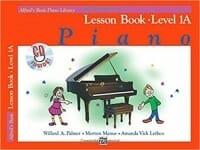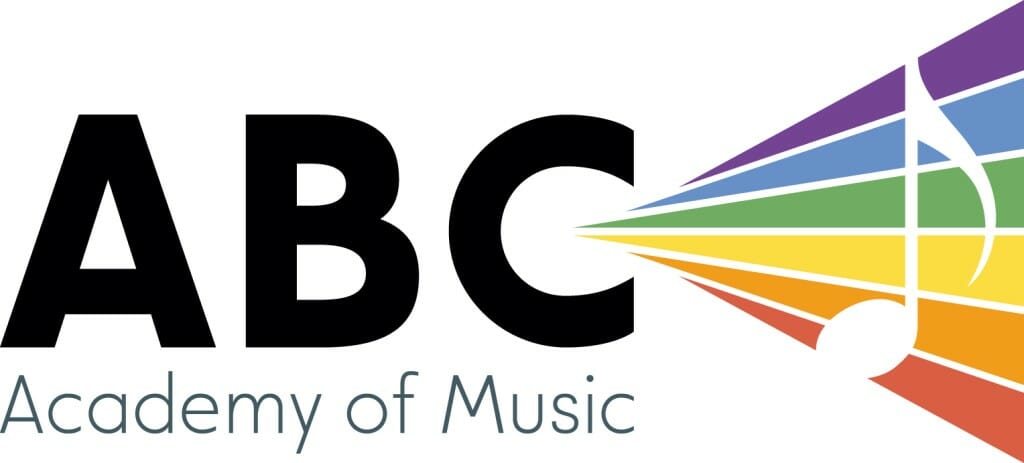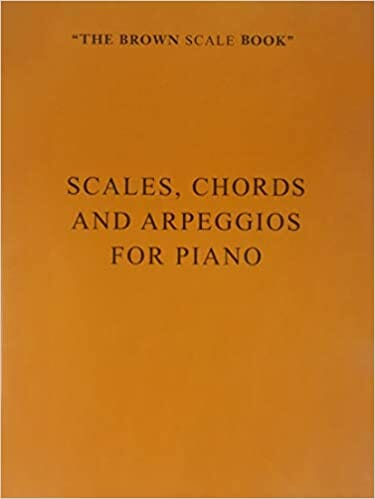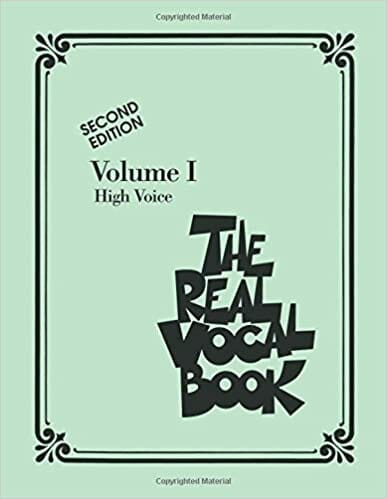B.Mus (Humber) in-progress
Adina is a singer-songwriter based in Toronto completing her Bachelor of Music degree at Humber College in vocal performance. Trained classically in piano since the age of 5, she has branched out into pop and jazz as well.
Vocally she is well-versed in many genres including jazz (she loves to scat!), musical theatre, pop, singer-songwriter, country, R&B, and acappella. She has 7 years of choir experience in both chamber and jazz styles. Adina has been writing and singing original songs since the age of 12, and has two singles as well as an EP out on all platforms under the artist name Adina V.
She has performed all across southern Ontario singing with the Toronto All-Star Big Band, as well as at various venues in the GTA with her own jazz duos and trios. As a member of the Cawthra Park Chamber Choir she performed at Roy Thompson Hall with the TSO for two years in a row. At Humber College she is part of the Vocal Jazz Ensemble led by Lisa Martinelli; this group performs advanced repertoire at events like the Ontario Vocal Jazz Festival.
Adina has been teaching music for the past 7 years and loves helping students meet their personal goals while fostering a love of music that lasts forever!
Get to know Adina…Beyond the Bio!
Hobbies: reading, puzzles, video games, painting
Musical Influences: Ella Fitzgerald, Nancy Wilson, Doris Day, Joni Mitchell, Taylor Swift, John Mayer
Favourite Food: Pad Thai
Least favourite food: eggplant
Favourite music: Indie rock and folk
Favourite song: All I Need by Jacob Collier ft. Mahalia & Ty Dolla $ign
Favourite movie: Matilda
Favourite movie music: The Pirates of the Caribbean theme
Favourite Musical: Dear Evan Hansen or The Last Five Years
Best Quote from your teacher: “It’s an amazing and wonderful experience to be able to be intentional about, in the moment, making music”
Favourite Quote: “Even as we are, we are becoming”
Favourite Book: The Girl With the Dragon Tattoo trilogy – Stieg Larsson
Best thing about teaching at ABC: Sharing and fostering a love of music with students of all ages
Latest Homework from Adina
Is Adina Your Teacher?
Sign up now to get your weekly assignments delivered, and never lose your homework sheet again!
Sunday, April 4th, 2021
Sahil
Recommended minutes to practice: 15 minutes a day
What to practice: “ya ya ya” 3-note warmup, Night Begins to Shine, Beyblade Burst Evolution
How to practice it most effectively: The “ya ya ya” warmup is for singing, but you will also play the notes on the keyboard. Start in C position (so RH – right hand – thumb on C). Then play C-D-E-E-D-C on piano only first so you can hear it once, then sing along with it. Then, move your hand up to D position and repeat. When we move positions remember your finger 1 (thumb) still has to be on the bottom note. Take this warmup up until around G position, then go back to C and this time shift your position down to B position then A position. For Night Begins to Shine we talked about the “form” of the song – how we have a verse and a chorus. Your verse guide note is the B right under middle C; this is the first note you start on. In the chorus, your main guide note is E above middle C – the words “when” and “night” with the G above that being the goal note for “shine”. Use these guide notes to help you stay on track. I’m attaching below a good youtube video to use for the Beyblade Burst Evolution song: please focus only on the right hand from 0:33 to 0:55, and slow it down to 0.5 speed to start.
Nathalia
Recommended minutes to practice: 15 minutes a day
What to practice: E major scale (hands together), Runaround Sue
How to practice it most effectively: In E major, we use the same fingerings, just adding a sharp (D#). The sharps in this scale exist in groups of 2 side by side, which is handy (F# and G# and C# and D#). The 3rd and 6th degrees where our finger 3s line up are G# and C#. For Runaround Sue, please play bars 1-8 and 17 to the end hands together – be extra careful with what octave LH plays in (the second time is 1 octave lower for everything). RH, continue noticing your intervals and which note is moving from one to the next versus which is staying. Whenever you are unsure of a note just use your sayings to double check. Bars 9-16 should still be kept hands separately – RH is only ever playing a third or a fourth; notice what the difference is visually on the staff between these two intervals. You can start adding staccatos in to make the character of the piece bouncier!
Sina
Recommended minutes to practice: 5 minutes a day
What to practice: Scavenger hunt of all piano letters, C position 5-finger warmup, thumbs on middle C warmup
How to practice it most effectively: For the scavenger hunt, start with finding all the Cs (in front of the group of 2 black keys) on your piano – use your left hand (LH) for the lower half notes and right hand (RH) for the upper half. Then find all the Fs (in front of the group of 3 black keys). After that try to find all the other letter names. When playing our warmups, please remember to bend from the finger knuckle, and keep your wrist in line with your arm. It should be as if you’ve got a small ping pong ball under your palm. C position means that LH finger 5 (pinky) and RH finger 1 (thumb) are on C, then the other fingers spread out one per note. Walk up in order then back down. The thumbs on C warmup has both hands finger 1s on middle C, with the other fingers spread out one per note again. Start on C then play the 2s together, then 3s together, etc. walking out then back in.
The book I recommend is the Alfred’s All-in-One Course Book 1, which can be found here: https://www.amazon.ca/Alfreds-Basic-All-One-Course/dp/0882847872
Tuesday, April 6th, 2021
Anaya
Recommended minutes to practice: 10 minutes a day
What to practice: Rain Rain, finishing as much as you can of the worksheet on pages 36-37
How to practice it most effectively: Today we learned about reading music on the staff. In Rain Rain we are playing with left hand in the bass clef: the two dots on the clef symbol surround the 4th line which is always the letter F. LH will be in C position, with finger 2 on F – at the start of the lines you have 6 Fs in a row! After that watch how the notes are stepping downwards then back up to F.
Saskia
Recommended minutes to practice: 10-15 minutes a day
What to practice: “na na na” warmup (3 note scale – start on ‘C’ on a piano app), Dynamite, Do a Deer
How to practice it most effectively: When doing your warmup, start at a middle/low part of your range and work your way upwards on the syllables “na” – the N will help you access a nasal tone. Once you’ve worked your way up, go back to that medium/low part of your range and then go downwards. For Dynamite, please be especially careful on the “shining through the city with a little funk and soul” line. To avoid straining, switch to that more nasal-y tone on the word “with” for the higher part of the line. When going down on “soul”, add a little H in front of the second note. In the breakdown section (dy-na-na-na-na…) do your best to keep the jaw still, using just little tongue movements between syllables since it’s so fast! Please continue to sing Do a Deer with the first part of the verse, we will start with that next week.
You can start singing Dynamite with a karaoke track as well: https://www.youtube.com/watch?v=V9aFf48jLPQ
Gianna
Recommended minutes to practice: 15-20 minutes a day
What to practice: C and G major scale warmups, skips warmup, Shake it Off, Life is an Adventure
How to practice it most effectively: In the C major scale warmup, please sing on the syllable “na” instead of the letters – keep your jaw nice and long especially when you get to the higher notes. In the G major scale warmup still say the letter names. For the new skips warmup, start in C position and play/sing C-E-G-E-C on any vowel (ah, oh, ooh, ee, etc.) and then do the same in F position. In Shake it Off‘s prechorus and chorus, A is the guide note – when singing along to your video please be at the keyboard so you can play this note for yourself to stay on track. Make sure you enunciate and really pronounce your consonants during the chorus.
**please print out this lyric/note sheet and practice the whole song top to bottom for Life is an Adventure: https://docs.google.com/document/d/1q8xwAPiytqgH1z2uuJhQLDvQwLKsBBUjK0usJ_rUKnw/edit?usp=sharingv
Ken
Recommended minutes to practice: 15-20 minutes a day
What to practice: B major scale (hands separately), Spring, Pirates of the North Sea
How to practice it most effectively: In B major we use all 5 black keys (5 sharps) – RH fingering stays the same, but LH uses 4-3-2-1-4-3-2-1 (finger 5 never plays). For Spring, please be extra careful with the staccato vs. legato articulation. RH should play the melody a couple of times alone before playing a third time through with LH. Remember that LH has ties, so you don’t play the second set of notes, you just let them hold. In Pirates of the North Sea, I’d like you to make all your staccatos as crisp and bouncy as possible. Use the sayings for bass clef (Good Birds Don’t Fly Away and All Cows Eat Grass) to help you with reading the bass clef notes.
Steve
Recommended minutes to practice: 15 minutes a day
What to practice: Chromatic scale (hands separately), Our Detective Agency
How to practice it most effectively: When playing the chromatic scale, remember that finger 3 always goes on the black keys. For RH going up you will do 1-3-1-3-1-2 when there is a white key semitone. For LH going up you will do 1-3-1-3-2-1. Our Detective Agency is a sneaky song with both staccato and legato articulations – try to really differentiate between these. Remember that flats last for a whole bar (so they won’t be labelled the second time in the same bar). Please watch out for the whole steps when you go from F to Eb, then Eb to Db.
Gabe
Recommended minutes to practice: 20 minutes a day
What to practice: Habanera, Porcupine Dance
How to practice it most effectively: In the Habanera, remember to do the sneaky staccatos for LH’s part in the first half of the piece – it really adds to the character. RH continue reading beyond the first page; towards the end there will be some intervals which are either 3rds or 6ths. Please use the sayings Every Good Boy Deserves Fudge and FACE in the space to help you read treble clef notes. For Porcupine Dance, please read just the right hand. Remember that in every bar we are always playing skips with fingers 1-3-5. The easiest way to sight read this piece is to just find the bottom note at the start of each bar, and then play the skips from there.
Isaac
Recommended minutes to practice: 20 minutes a day
What to practice: Blinky the Robot, Porcupine Dance, and finishing pages 64-64 in the theory book
How to practice it most effectively: In Blinky the Robot, try your best to make staccatos really short and crisp (especially on the first page). For the top half of the second page, really notice your patterns and repeating shapes. For Porcupine Dance, start hands separately but work towards trying it hands together before next class. In every single bar in this song there is a position shift (only by one or two steps, though). Once you figure out your bottom note, the rest is all skips. Continue playing crisp staccatos in this piece as well.
Wednesday, June 2nd, 2021
Dvorah
Recommended minutes to practice: 10-15 minutes a day
What to practice: C major scale (1 hand at a time, up and down), Yankee Doodle, A Joke For You, Football Game
How to practice it most effectively: For the C major scale, try to play connected, using these fingerings for RH: 1-2-3-1-2-3-4-5 and these fingerings for LH: 5-4-3-2-1-3-2-1. For Yankee Doodle, please add the intro, and try singing along to it! For A Joke For You, LH is playing some new notes – low C is on the 2nd space, and low D is on the 3rd line. In the second line, please watch out for the RH skip! Football Game has LH in low C position (finger 5 on C). As always, be extra careful with steps vs. skips.
Diya
Recommended minutes to practice: 20 minutes a day
What to practice: Ferris Wheel, Mexican Jumping Beans, Never Enough, Best Day of My Life
How to practice it most effectively: For Ferris Wheel please add in the final line of C and E skips played together – try to follow the dynamic markings (going from loud to soft). As always, be extra careful with steps vs. skips, and make sure you hold all half notes the full 2 beats. For Mexican Jumping Beans we are playing staccato – let your wrist be bouncy so you play the notes short and crisp. Both hands are in C position for this song. LH can use the All Cows Eat Grass saying to help with large space jumps. For Never Enough, remember we stay on the same note for “stay this way“, and “louder now” since the melody goes too low. Your open vowels are fantastic, just make sure your “for me” sounds like the word “me” and not the word “may” – the jaw can still be open, just make sure your tongue is higher up to achieve the correct vowel sound. Please continue practicing Best Day of My Life, we will start with this next week.
Marco
Recommended minutes to practice: 15 minutes a day
What to practice: The Juggler, Traffic Jam 2nds, and This is Not Jingle Bells
How to practice it most effectively: In The Juggler, there should be a nice contrast between the legato and staccato sections. Bars 9 to 14 have RH hopping over LH, all on Cs! In bars 8 and 16, LH holds onto the dotted half note under the RH staccatos. For Traffic Jam 2nds, please do the repeat. A second is another word for a step – these notes are right beside each other and sound squishy. For This is Not Jingle Bells, RH is in middle C position, while LH goest between a couple of different positions – just watch the finger numbers to determine where LH should be.
Oliver
Recommended minutes to practice: 10-15 minutes a day
What to practice: Bingo as main focus, and Firefly (from the new book)
How to practice it most effectively: For Bingo, please double check all notes in the 2nd line where RH and LH play together – the pattern here is that from bar 5 to 6 both hands step up, then again from bar 7 to 8 both hands step up. The song starts with a pickup eighth note – this G is coming in on an “and” beat, and the first C in bar 1 is your beat 1. Continue whispering your eighth rests! I’d love to hear Firefly next week if you’ve been working on it.
Alice
Recommended minutes to practice: 15 minutes a day
What to practice: Grandmother, Lemonade Stand, Let Me Love You, My Favourite Things
How to practice it most effectively: For Grandmother, continue paying close attention to whether notes move in steps or skips. The second line has LH C and G playing together at the same time as RH’s melody. For Lemonade Stand, the hands are in C position, meaning LH’s finger 5 is on C, 1 (thumb) is on G. This song introduces us to the tie – whenever there are tied notes, we don’t replay the second one and instead hold through the full value. So in this song the tied dotted half notes hold for a total of 6 beats! Here are lyric videos for both Let Me Love You and My Favourite Things: For Let Me Love You, we’ll have to sing the verses up an octave, using guide notes G and C above middle C. The melody will be the same, just higher.
https://www.youtube.com/watch?v=IZbzc7jvk00
Linda
Recommended minutes to practice: 20 minutes a day
What to practice: I’ve Got You Under My Skin, Calico Cat, Pyranese Melody
How to practice it most effectively: For Under My Skin, please do the G7 inversion on all D-7 to G7 cadences. Great work on the b9 chords! Between the -7b5 chords and 7b9 chords your RH pinky just moves down 1 semitone. The couple of chords where the flat is right beside the letter tell us that the root of the chord is a flat key (so for example the Eb7 and Bb7). Eb7 is Eb-G-Bb-Db and Bb7 is Bb-D-F-Ab. You may continue to practice Calico Cat as a warmup song – just make sure you start at a tempo that’s sustainable for the whole piece. We will start with Pyranese Melody next week.
Emet
Recommended minutes to practice: 20 minutes
What to practice: Haunted House, Walk Don’t Run
How to practice it most effectively: Please start Haunted House by playing the 1, 2, and 3 warmups a few times to get the feel of eighth note triplets. The way to count these is “1 and a”, where you replace “1” with whichever beat the triplet starts on. We will play the A section (so before the endings) hands together, and the B section (last 2 lines) hands separately. No need to play the full form this week. The first bar of line three has both hands lining up on the same letters on the numbered beats – you can use this to help you. Please continue playing Walk, Don’t Run – we will start with this one next week.
Kollel
Recommended minutes to practice: 20-25 minutes a day
What to practice: B major triads, The Black Pony, The Entertainer
How to practice it most effectively: For the B major triads, start hands separately then work to have the hands together by the end of the week. Please use the same fingerings as all other triads, just with the hands higher up into the keys to reach the 2 sharps. For The Black Pony, please double check RH’s 5ths in bars 12 and 20 – they should be Eb to Bb. The last step will be to gradually increase the tempo! For The Entertainer, please play the intro hands together, and the first section hands separately. LH will find it helpful to look at the steps/skips/etc. relationship between every other eighth note (so bass notes compared to each other, and chords compared to each other). I personally like to feel this song in 4 and count 1+2+3+4+ rather than in 2 counting 1e+a, 2e+a. RH is playing a lot of sixths in this song, and LH has a lot of octaves.
Preferred Books for Adina’s Students
Click to buy them here, and they’ll come right to your house! What could be easier?
Alfred's Basic Piano Library Lesson Book 1A

Alfred's Adult Basic All-In-One
Alfred’s Basic Adult All-in-One Course is designed for use with a piano instructor for the beginning student looking for a truly complete piano course. It is a greatly expanded version of Alfred’s Basic Adult Piano Course that will include lesson, theory, and technique in a convenient, “all-in-one” format. This comprehensive course adds such features as isometric hand exercises, finger strengthening drills, and written assignments that reinforce each lesson’s concepts. There is a smooth, logical progression between each lesson, a thorough explanation of chord theory and playing styles, and outstanding extra songs, including folk, classical, and contemporary selections.
The Brown Scale Book
This essential resource includes all major and minor scales, triads, arpeggios, dominant sevenths, and chromatic scales organized by key. A favorite for decades, The Brown Scale Book belongs in every student’s library.
The Real Vocal Book
The Real Vocal Book has many of the selections from Volumes 1 and 2 of the instrumental Real Books, but now with complete lyrics added to the pre-existing melody line. This edition features 300 essential songs arranged for low voice, including: Alfie * All of Me * Autumn Leaves * Bewitched * Bluesette * Don’t Get Around Much Anymore * Fever * Georgia on My Mind * Misty * Moon River * My Funny Valentine * Satin Doll * and more. Looking for a particular song? Check out the Real Book Songfinder here.









